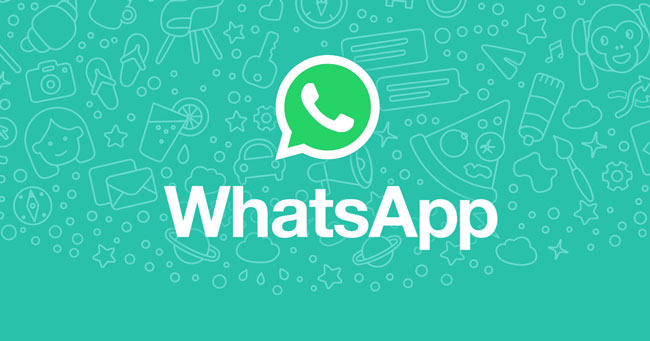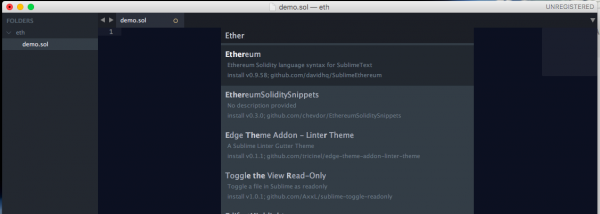– George Howard, Associate Professor Brown University, Berklee College of Music and Founder of George Howard Strategic
The Blockchain a New Web 3.0?
The blockchain gives internet users the ability to create value and authenticates digital information. What new business applications will result?
Smart contracts
Distributed ledgers enable the coding of simple contracts that will execute when specified conditions are met. Ethereum is an open source blockchain project that was built specifically to realize this possibility. Still, in its early stages, Ethereum has the potential to leverage the usefulness of blockchains on a truly world-changing scale.
At the technology’s current level of development, smart contracts can be programmed to perform simple functions. For instance, a derivative could be paid out when a financial instrument meets certain benchmark, with the use of blockchain technology and Bitcoin enabling the payout to be automated.
The sharing economy
With companies like Uber and AirBnB flourishing, the sharing economy is already a proven success. Currently, however, users who want to hail a ride-sharing service have to rely on an intermediary like Uber. By enabling peer-to-peer payments, the blockchain opens the door to direct interaction between parties — a truly decentralized sharing economy results.
An early example, OpenBazaar uses the blockchain to create a peer-to-peer eBay. Download the app onto your computing device, and you can transact with OpenBazzar vendors without paying transaction fees. The “no rules” ethos of the protocol means that personal reputation will be even more important to business interactions than it currently is on eBay.
Crowdfunding
Crowdfunding initiatives like Kickstarter and Gofundme are doing the advance work for the emerging peer-to-peer economy. The popularity of these sites suggests people want to have a direct say in product development. Blockchains take this interest to the next level, potentially creating crowd-sourced venture capital funds.
In 2016, one such experiment, the Ethereum-based DAO (Decentralized Autonomous Organization), raised an astonishing $200 million USD in just over two months. Participants purchased “DAO tokens” allowing them to vote on smart contract venture capital investments (voting power was proportionate to the number of DAO they were holding). A subsequent hack of project funds proved that the project was launched without proper due diligence, with disastrous consequences. Regardless, the DAO experiment suggests the blockchain has the potential to usher in “a new paradigm of economic cooperation.”
Governance
By making the results fully transparent and publicly accessible, distributed database technology could bring full transparency to elections or any other kind of poll taking. Ethereum-based smart contracts help to automate the process.
The app, Boardroom, enables organizational decision-making to happen on the blockchain. In practice, this means company governance becomes fully transparent and verifiable when managing digital assets, equity or information.
Supply chain auditing
Consumers increasingly want to know that the ethical claims companies make about their products are real. Distributed ledgers provide an easy way to certify that the backstories of the things we buy are genuine. Transparency comes with blockchain-based timestamping of a date and location — on ethical diamonds, for instance — that corresponds to a product number.
The UK-based Provenance offers supply chain auditing for a range of consumer goods. Making use of the Ethereum blockchain, a Provenance pilot project ensures that fish sold in Sushi restaurants in Japan has been sustainably harvested by its suppliers in Indonesia.
File storage
Decentralizing file storage on the internet brings clear benefits. Distributing data throughout the network protects files from getting hacked or lost.
Inter Planetary File System (IPFS) makes it easy to conceptualize how a distributed web might operate. Similar to the way a bittorrent moves data around the internet, IPFS gets rid of the need for centralized client-server relationships (i.e., the current web). An internet made up of completely decentralized websites has the potential to speed up file transfer and streaming times. Such an improvement is not only convenient. It’s a necessary upgrade to the web’s currently overloaded content-delivery systems.
Prediction markets
The crowdsourcing of predictions on event probability is proven to have a high degree of accuracy. Averaging opinions cancels out the unexamined biases that distort judgment. Prediction markets that pay out according to event outcomes are already active. Blockchains are a “wisdom of the crowd” technology that will no doubt find other applications in the years to come.
Still, in Beta, the prediction market application Augur makes share offerings on the outcome of real-world events. Participants can earn money by buying into the correct prediction. The more shares purchased in the correct outcome, the higher the payout will be. With a small commitment of funds (less than a dollar), anyone can ask a question, create a market based on a predicted outcome, and collect half of all transaction fees the market generates.
Protection of intellectual property
As is well known, digital information can be infinitely reproduced — and distributed widely thanks to the internet. This has given web users globally a goldmine of free content. However, copyright holders have not been so lucky, losing control over their intellectual property and suffering financially as a consequence. Smart contracts can protect copyright and automate the sale of creative works online, eliminating the risk of file copying and redistribution.
Mycelia uses the blockchain to create a peer-to-peer music distribution system. Founded by the UK singer-songwriter Imogen Heap, Mycelia enables musicians to sell songs directly to audiences, as well as licence samples to producers and divvy up royalties to songwriters and musicians — all of these functions being automated by smart contracts. The capacity of blockchains to issue payments in fractional cryptocurrency amounts (micropayments) suggests this use case for the blockchain has a strong chance of success.
Internet of Things (IoT)
What is the IoT? The network-controlled management of certain types of electronic devices — for instance, the monitoring of air temperature in a storage facility. Smart contracts make the automation of remote systems management possible. A combination of software, sensors, and the network facilitates an exchange of data between objects and mechanisms. The result increases system efficiency and improves cost monitoring.
The biggest players in manufacturing, tech and telecommunications are all vying for IoT dominance. Think Samsung, IBM and AT&T. A natural extension of existing infrastructure controlled by incumbents, IoT applications will run the gamut from predictive maintenance of mechanical parts to data analytics, and mass-scale automated systems management.
Neighbourhood Microgrids
Blockchain technology enables the buying and selling of the renewable energy generated by neighborhood microgrids. When solar panels make excess energy, Ethereum-based smart contracts automatically redistribute it. Similar types of smart contract automation will have many other applications as the IoT becomes a reality.
Located in Brooklyn, Consensys is one of the foremost companies globally that is developing a range of applications for Ethereum. One project they are partnering on is Transactive Grid, working with the distributed energy outfit, LO3. A prototype project currently up and running uses Ethereum smart contracts to automate the monitoring and redistribution of microgrid energy. This so-called “intelligent grid” is an early example of IoT functionality.
Identity management
There is a definite need for better identity management on the web. The ability to verify your identity is the lynchpin of financial transactions that happen online. However, remedies for the security risks that come with web commerce are imperfect at best. Distributed ledgers offer enhanced methods for proving who you are, along with the possibility to digitize personal documents. Having a secure identity will also be important for online interactions — for instance, in the sharing economy. A good reputation, after all, is the most important condition for conducting transactions online.
Developing digital identity standards is proving to be a highly complex process. Technical challenges aside, a universal online identity solution requires cooperation between private entities and government. Add to that the need to navigate legal systems in different countries and the problem becomes exponentially difficult. E-Commerce on the internet currently relies on the SSL certificate (the little green lock) for secure transactions on the web. Netki is a startup that aspires to create a SSL standard for the blockchain. Having recently announced a $3.5 million seed round, Netki expects a product launch in early 2017.
AML and KYC
Anti-money laundering (AML) and know your customer (KYC) practices have a strong potential for being adapted to the blockchain. Currently, financial institutions must perform a labour intensive multi-step process for each new customer. KYC costs could be reduced through cross-institution client verification, and at the same time increase monitoring and analysis effectiveness.
startup Polycoin has an AML/KYC solution that involves analysing transactions. Those transactions identified as being suspicious are forwarded on to compliance officers. Another startup Tradle is developing an application called Trust in Motion (TiM). Characterized as an “Instagram for KYC”, TiM allows customers to take a snapshot of key documents (passport, utility bill, etc.). Once verified by the bank, this data is cryptographically stored on the blockchain.
Data management
Today, in exchange for their personal data people can use social media platforms like Facebook for free. In future, users will have the ability to manage and sell the data their online activity generates. Because it can be easily distributed in small fractional amounts, Bitcoin — or something like it — will most likely be the currency that gets used for this type of transaction.
The MIT project Enigma understands that user privacy is the key precondition for creating of a personal data marketplace. Enigma uses cryptographic techniques to allow individual data sets to be split between nodes, and at the same time run bulk computations over the data group as a whole. Fragmenting the data also makes Enigma scalable (unlike those blockchain solutions where data gets replicated on every node). A Beta launch is promised within the next six months.
Land title registration
As Publicly-accessible ledgers, blockchains can make all kinds of record-keeping more efficient. Property titles are a case in point. They tend to be susceptible to fraud, as well as costly and labour intensive to administer.
A number of countries are undertaking blockchain-based land registry projects. Honduras was the first government to announce such an initiative in 2015, although the current status of that project is unclear. This year, the Republic of Georgia cemented a deal with the Bitfury Group to develop a blockchain system for property titles. Reportedly, Hernando de Soto, the high profile economist and property rights advocate, will be advising on the project. Most recently, Sweden announced it was experimenting with a blockchain application for property titles.
Stock trading
The potential for added efficiency in share settlement makes a strong use case for blockchains in stock trading. When executed peer-to-peer, trade confirmations become almost instantaneous (as opposed to taking three days for clearance). Potentially, this means intermediaries — such as the clearing house, auditors and custodians — get removed from the process.
Numerous stock and commodities exchanges are prototyping blockchain applications for the services they offer, including the ASX (Australian Securities Exchange), the Deutsche Börse (Frankfurt’s stock exchange) and the JPX (Japan Exchange Group). Most high profile because the acknowledged first mover in the area, is the Nasdaq’s Linq, a platform for private market trading (typically between pre-IPO startups and investors). A partnership with the blockchain tech company Chain, Linq announced the completion of it its first share trade in 2015. More recently, Nasdaq announced the development of a trial blockchain project for proxy voting on the Estonian Stock Market.
 11/13/2017 03:52:00 PM
11/13/2017 03:52:00 PM
 K.D
K.D

















